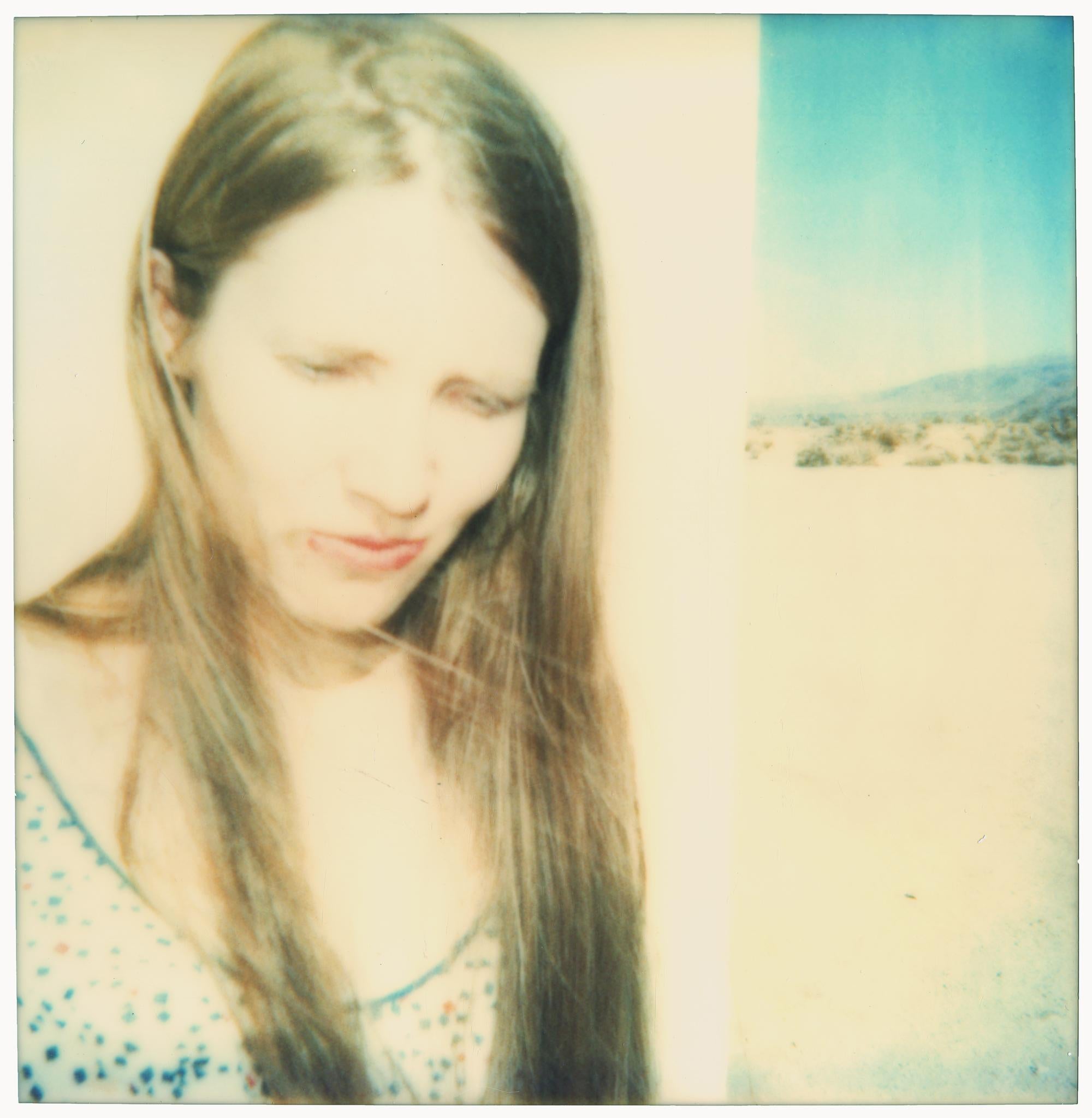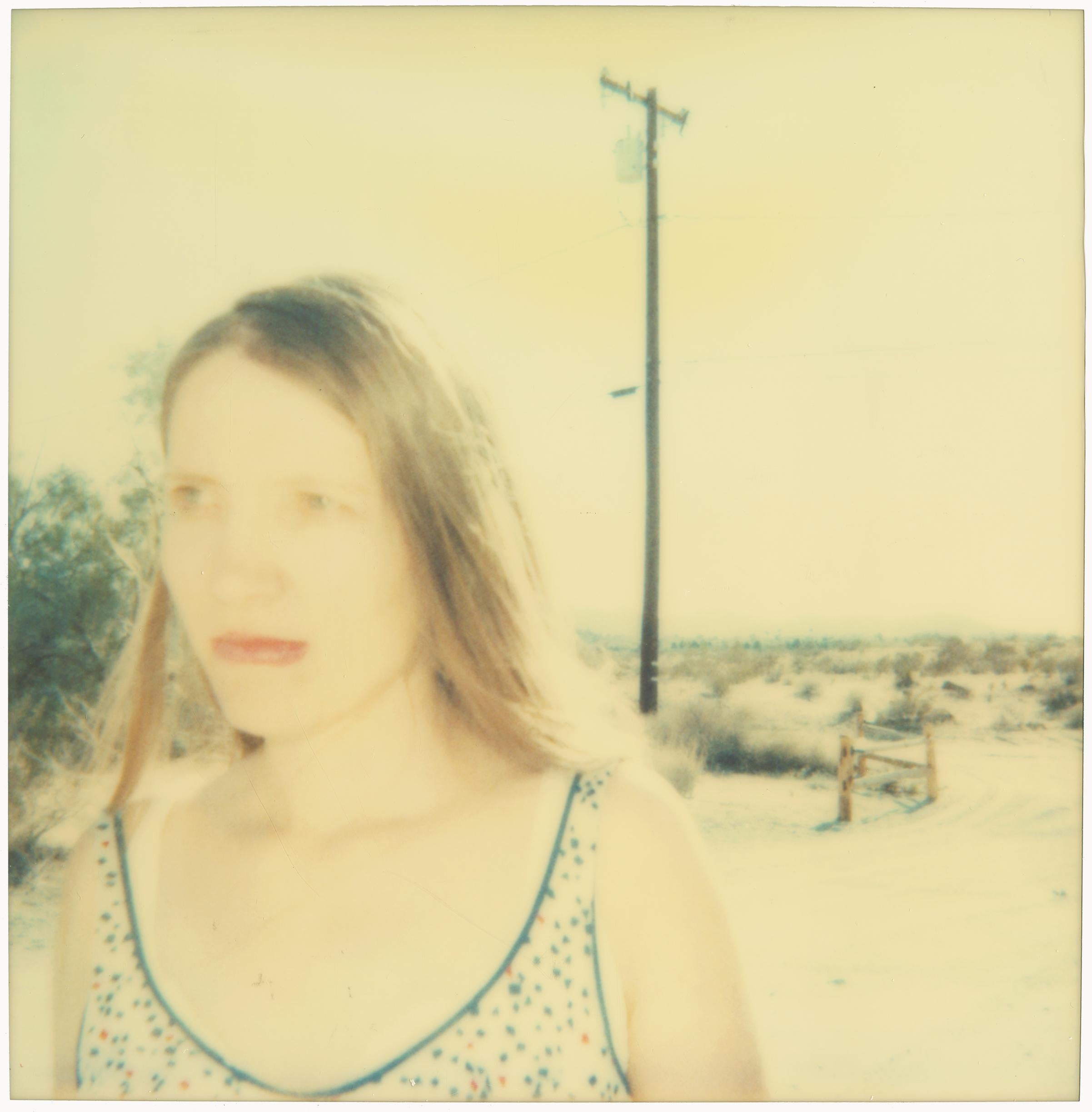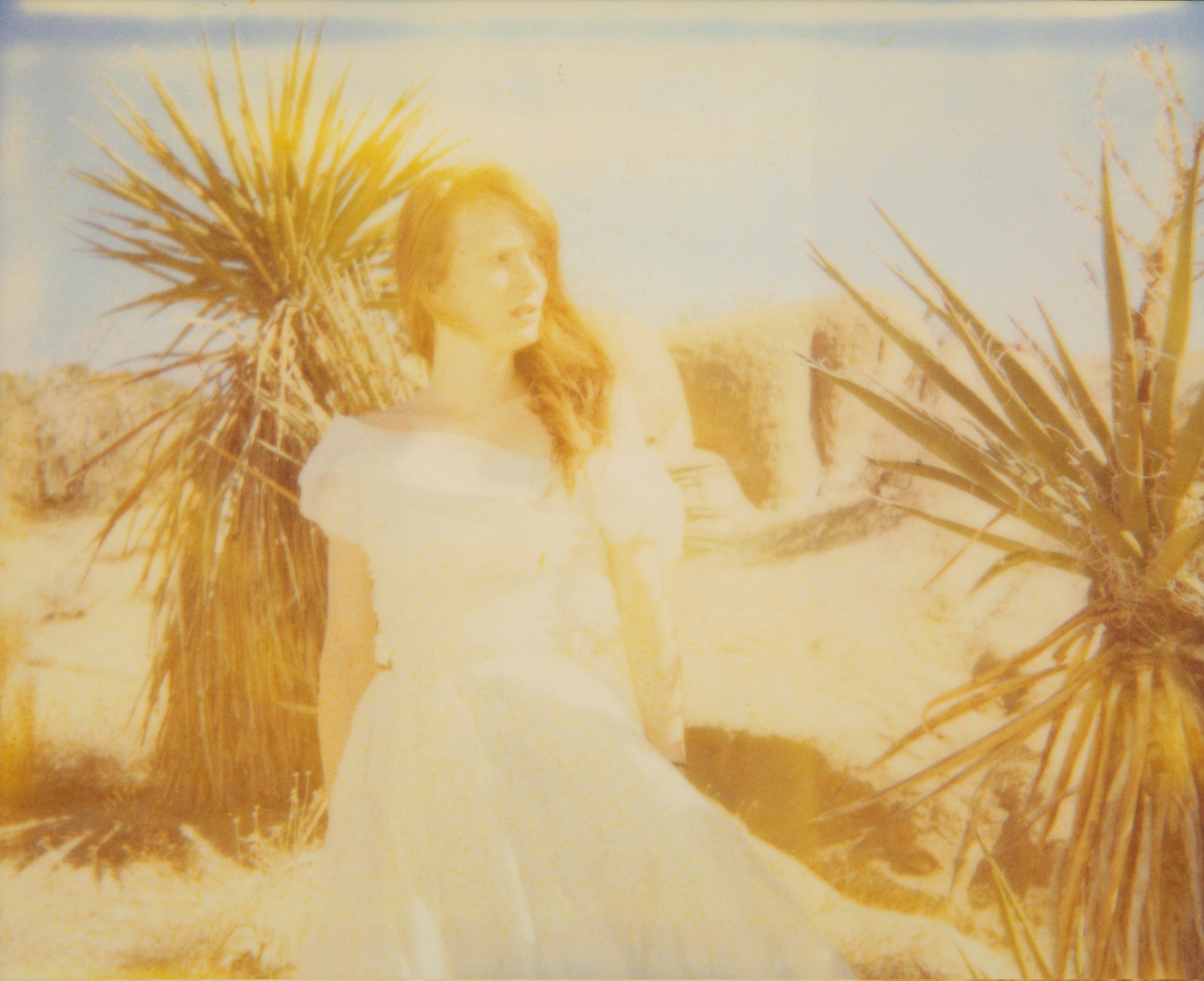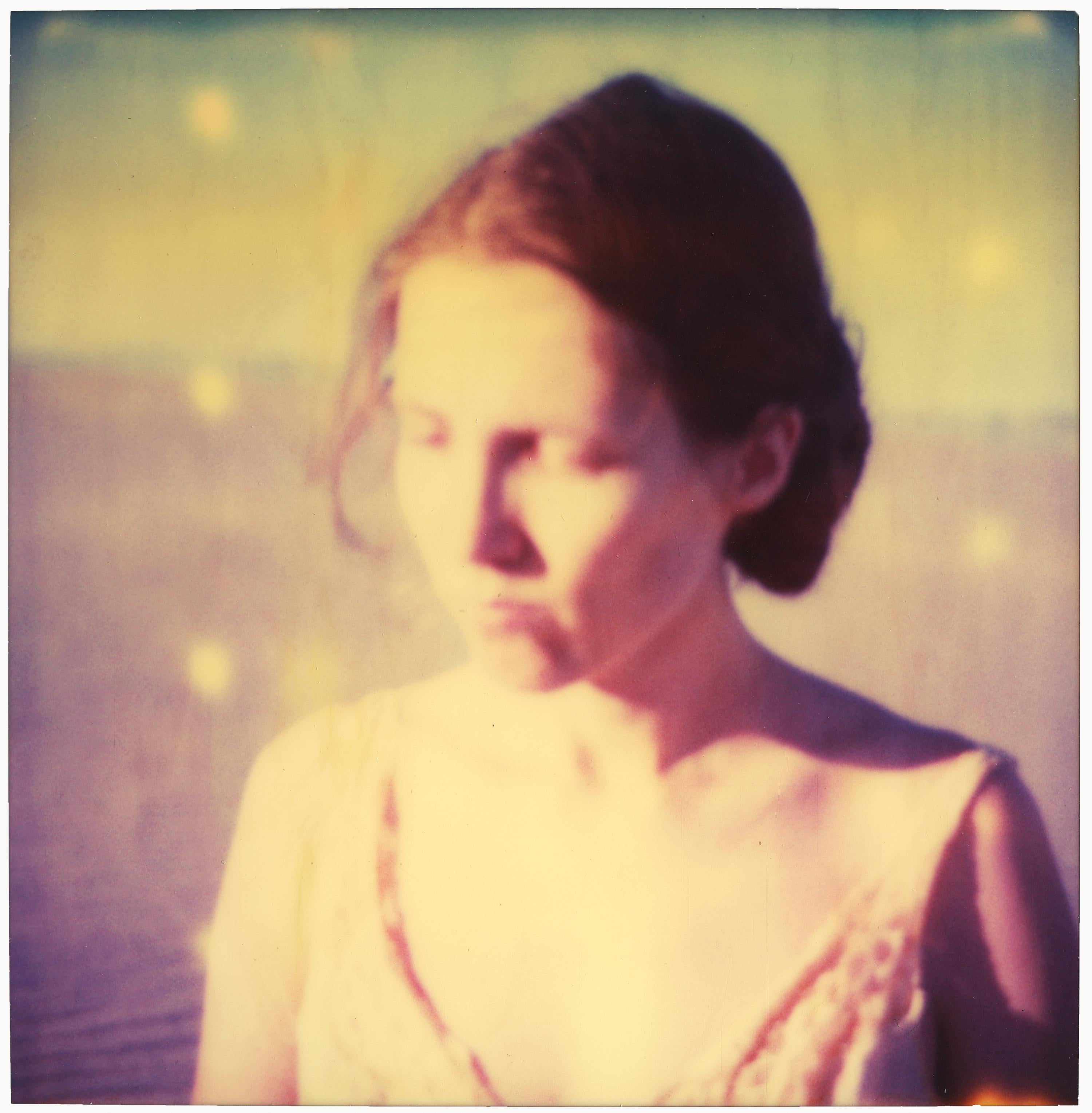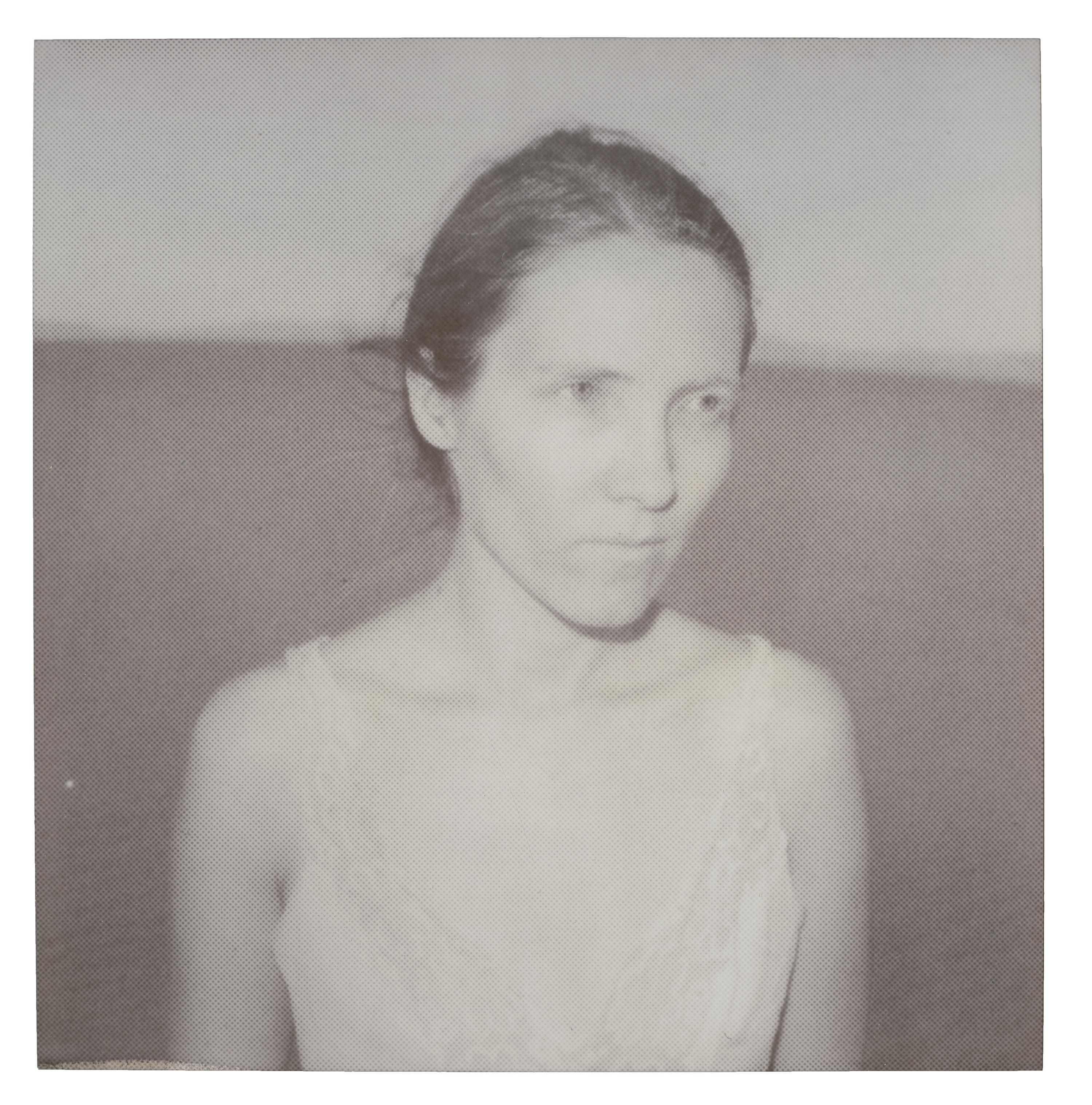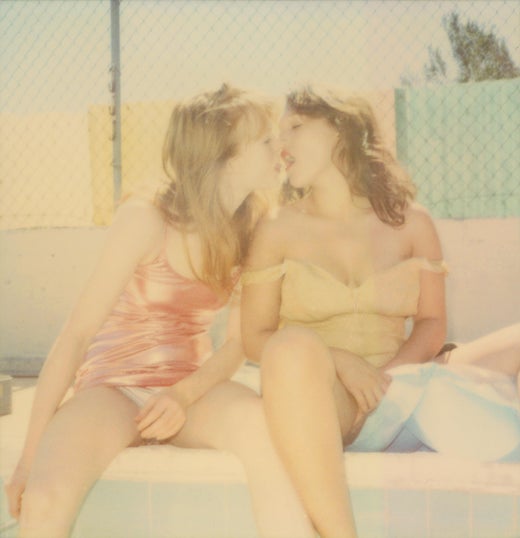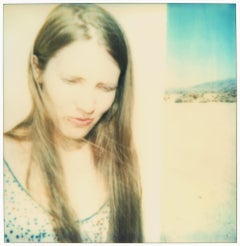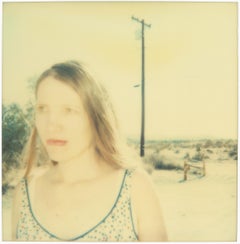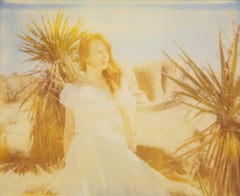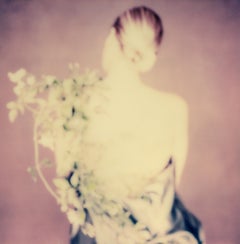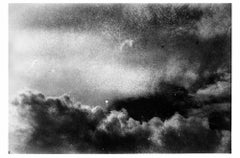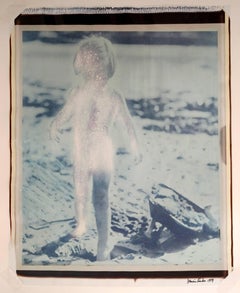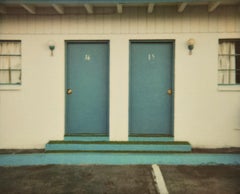Items Similar to 29 Day Dreams - 29 Palms, CA, analog hand-print, 58x56cm, 21st Century, Polaroid
Want more images or videos?
Request additional images or videos from the seller
1 of 5
Stefanie Schneider29 Day Dreams - 29 Palms, CA, analog hand-print, 58x56cm, 21st Century, Polaroid1999
1999
$2,373.98
£1,791.32
€2,000
CA$3,308.78
A$3,596.76
CHF 1,885.02
MX$43,775.63
NOK 23,727.89
SEK 22,296.50
DKK 15,234.73
About the Item
29 Day Dreams (29 Palms, CA) - 1999
58x56cm,
Edition of 10,
analog C-Print, hand-printed by the artist on Fuji Crystal Archive paper,
matte surface, based on a Polaroid,
Not mounted,
Signature label and Certificate,
artist inventory number: 278.03
published in: STRANGER THAN PARADISE published by Hatje Cantz Verlag, Ostfilder, 2006, (monography), 29 PALMS, CA published by Galerie Kaempf, Basel, 2004, (monography)
Exhibition history:
2005: nd-projects (Plattform elf), Zurich, Switzerland (S) - 2004: 29 Palms, CA, curated by Andrea Domesle, Brotfabrik, Berlin, Germany (S), Gallery Zelda Cheatle, London, United Kingdom (S), Endstation Sehnsucht, Galerie Greulich, Frankfurt, Germany (S), 29 Palms, CA, Galerie Kaempf, Basel, Switzerland (S) (catalog), Galerie Michael Sturm, Stuttgart, Germany (S)
Stefanie Schneider’s work is a meditation on time—its erosion, its persistence, its ability to fracture and reassemble in the mind’s eye. Like faded dreams or half-remembered encounters, her Polaroid images exist in a liminal space where past and present bleed into one another, never quite whole, never truly lost.
Her process itself is an act of defying time. The expired Polaroid film she employs carries within it the chemical scars of its own history, yielding unpredictable mutations that transform each image into an artifact of imperfection. These distortions are not merely aesthetic choices but echoes of memory—relics of moments that refuse to remain static. In an era of hyper-clarity and digital perfection, Schneider’s art invites us to embrace the ephemeral, to find beauty in the decayed and the transient.
The American West, a landscape steeped in myth and reinvention, becomes the perfect backdrop for this exploration of time’s paradoxes. Her subjects—wandering figures in motels, trailer parks, and endless deserts—are suspended between nostalgia and an uncertain future, much like the film she captures them on. They exist in a cinematic loop, their stories unfolding and dissolving, caught in the glow of a setting sun that never fully disappears.
But there is a deeper shift at play, one that mirrors the changing nature of artistic life itself. Before 2020, artists thrived on movement, on exposure, on a constant dialogue between places and people. Travel was a necessity, a lifeline to new influences and inspirations. Yet, in the wake of global upheaval, a hyper-isolationist existence has taken hold, where the act of creation unfolds within a contained world. Schneider’s desert sanctuary reflects this new reality—an alternate universe born from necessity, a space where time stretches and bends inward, echoing the dreamlike qualities of her work. The outside world receded, but within this solitude, another form of freedom emerged: the ability to construct a world entirely of one’s own making.
Memory, like Schneider’s images, is imperfect. It shifts, it fades, it distorts. Yet, in these imperfections, new narratives emerge—ones that feel more real than reality itself. This is the power of Schneider’s work: to remind us that time is not linear but layered, that the past is never truly past, and that every moment carries the weight of all that came before.
Her work is not just a preservation of a vanishing medium—it is a meditation on the nature of remembrance itself. In every blurred silhouette and chemical wash of color, she captures what it means to hold onto time even as it slips through our fingers, to relive and reinterpret, over and over again, the memories we think define us. Schneider’s images are time capsules, not of fixed moments, but of the way moments feel—a testament to how time warps, erases, and ultimately reveals. They are not just photographs; they are fragments of time, unraveling like film caught in the projector’s glow, forever flickering between memory and dream.
Stefanie Schneider received her MFA in Communication Design at the Folkwang Schule Essen, Germany. Her work has been shown at the Museum for Photography, Braunschweig, Museum für Kommunikation, Berlin, the Institut für Neue Medien, Frankfurt, the Nassauischer Kunstverein, Wiesbaden, Kunstverein Bielefeld, Museum für Moderne Kunst Passau, Les Rencontres d'Arles, Foto -Triennale Esslingen, Bombay Beach Biennale 2018.
- Creator:Stefanie Schneider (1968, German)
- Creation Year:1999
- Dimensions:Height: 22.84 in (58 cm)Width: 22.05 in (56 cm)Depth: 0.04 in (1 mm)
- More Editions & Sizes:20x20cm, Edition of 10Price: $356
- Medium:
- Movement & Style:
- Period:
- Condition:
- Gallery Location:Morongo Valley, CA
- Reference Number:1stDibs: LU652316259832
Stefanie Schneider
Stefanie Schneider received her MFA in Communication Design at the Folkwang Schule Essen, Germany. Her work has been shown at the Museum for Photography, Braunschweig, Museum für Kommunikation, Berlin, the Institut für Neue Medien, Frankfurt, the Nassauischer Kunstverein, Wiesbaden, Kunstverein Bielefeld, Museum für Moderne Kunst Passau, Les Rencontres d'Arles, Foto -Triennale Esslingen., Bombay Beach Biennale 2018, 2019.
About the Seller
4.9
Platinum Seller
Premium sellers with a 4.7+ rating and 24-hour response times
Established in 1996
1stDibs seller since 2017
1,048 sales on 1stDibs
Typical response time: 1 hour
- ShippingRetrieving quote...Shipping from: Morongo Valley, CA
- Return Policy
Authenticity Guarantee
In the unlikely event there’s an issue with an item’s authenticity, contact us within 1 year for a full refund. DetailsMoney-Back Guarantee
If your item is not as described, is damaged in transit, or does not arrive, contact us within 7 days for a full refund. Details24-Hour Cancellation
You have a 24-hour grace period in which to reconsider your purchase, with no questions asked.Vetted Professional Sellers
Our world-class sellers must adhere to strict standards for service and quality, maintaining the integrity of our listings.Price-Match Guarantee
If you find that a seller listed the same item for a lower price elsewhere, we’ll match it.Trusted Global Delivery
Our best-in-class carrier network provides specialized shipping options worldwide, including custom delivery.More From This Seller
View AllUntitled (29 Palms, CA) - analog, Polaroid, Contemporary
By Stefanie Schneider
Located in Morongo Valley, CA
Untitled (29 Palms, CA) - 1999
20x20cm,
Edition of 10, plus 2 Artist Proofs.
Archival C-Print, based on the original Polaroid.
Signature label and Certificate.
Artist inventory N...
Category
1990s Contemporary Nude Photography
Materials
Archival Paper, Photographic Paper, C Print, Color, Polaroid
Wallflower (29 Palms, CA) - Polaroid, Contemporary
By Stefanie Schneider
Located in Morongo Valley, CA
Wallflower (29 Palms, CA) - 1999
58x56cm,
Edition of 10, plus 2 Artist Proofs.
Analog C-Print, hand-printed by the artist, based on the Polaroid.
Signature label and Certificate,...
Category
1990s Contemporary Portrait Photography
Materials
Archival Paper, Photographic Paper, C Print, Color, Polaroid
Untitled (29 Palms, CA) - analog, Polaroid, Contemporary
By Stefanie Schneider
Located in Morongo Valley, CA
Untitled (29 Palms, CA) - 1999
20x20cm,
Edition of 10, plus 2 Artist Proofs.
Archival C-Print, based on the original Polaroid.
Signature label and Certificate.
Artist inventory N...
Category
1990s Contemporary Nude Photography
Materials
Archival Paper, Photographic Paper, C Print, Color, Polaroid
False Pretenses (29 Palms, CA) Contemporary, Woman, Polaroid
By Stefanie Schneider
Located in Morongo Valley, CA
False Pretenses (29 Palms, CA) - 2008
20x24cm,
Edition of 10, plus 2 Artist Proofs,
Archival C-Print, based on the Polaroid.
Certificate and Signature label.
Artist Inventory #573...
Category
Early 2000s Contemporary Color Photography
Materials
Archival Paper, Photographic Paper, C Print, Color, Polaroid
Untitled (Olancha) - Stranger than Paradise - analog C-Print based on a Polaroid
By Stefanie Schneider
Located in Morongo Valley, CA
Untitled (Olancha) - 2006 (artist self portrait)
38x37cm.
Edition of 5, plus 2 Artist Proofs.
Analog C-Print, hand-printed by the artist, based on the Polaroid.
Signature label a...
Category
Early 2000s Contemporary Portrait Photography
Materials
Archival Paper, Photographic Paper, C Print, Color, Polaroid
Untitled (Olancha) - Stranger than Paradise - analog C-Print based on a Polaroid
By Stefanie Schneider
Located in Morongo Valley, CA
Untitled (Olancha) - 2006,
38x37cm.
Edition of 5, plus 2 Artist Proofs.
Analog C-Print, hand-printed by the artist, based on a Polaroid.
Signature label and Certificate.
Artist...
Category
Early 2000s Contemporary Portrait Photography
Materials
Archival Paper, Photographic Paper, C Print, Color, Polaroid
You May Also Like
Jasmine - 21st Century Contemporary Photographic Print Color Polaroid
By Pia Clodi
Located in Zürich, CH
Part of the BLOOMY VIEW series taken in Bern 2020 in collaboration with Heym Collections, the images gained new life in their ambiguity, which often stimulates the viewer to project ...
Category
2010s Contemporary Abstract Prints
Materials
Carbon Pigment, Polaroid
$1,804 Sale Price
20% Off
Expired_14_2020 - Photograph by Serena Zeppilli
Located in Roma, IT
This photograph Expired_14_2020 was taken by the Italian photographer Serena Zeppilli.
It is part of the series "I was looking for something that I...
Category
21st Century and Contemporary Contemporary Figurative Photography
Materials
Photographic Paper
Large Format Vintage Color 20X24 Polaroid "Radiant Child" signed and dated
By Dennis Farber
Located in Surfside, FL
30X26 with Mat. (20X24 inch polaroid) From The New York Times: Dennis Farber abducts children from photographic illustrations in children's books of the 30's. He paints Ku Klux Klan costumes on some toddlers at a birthday party, as if he could see their character and future by the light of the birthday candles...
Category
1980s Figurative Photography
Materials
Photographic Paper
Vegas 16 15– Emma Summerton, Polaroid, Architecture, Motel, Street photography
By Emma Summerton
Located in Zurich, CH
Emma SUMMERTON (*1970, Australia)
Vegas 16 15, 2007
Archival pigment print on Hahnemühle Paper
100 x 120 cm (39 3/8 x 47 1/4 in.)
Edition of 5, plus 2 AP; Ed. no. 2/5
Print only
Australian born Emma Summerton (*1970) graduated from the National Art School in Sydney, where she studied fine arts majoring in Photography. Summerton moved to London in 1998, where she worked as an assistant to artist Fiona Banner...
Category
Early 2000s Contemporary Color Photography
Materials
Archival Pigment
Price Upon Request
Free Shipping
Chelsea Hotel #3 – Emma Summerton, Polaroid, Interior, Woman, Nude, Polaroid
By Emma Summerton
Located in Zurich, CH
Emma SUMMERTON (*1970, Australia)
Chelsea Hotel #3, 2003
Archival pigment print on Hahnemühle Paper
100 x 120 cm (39 3/8 x 47 1/4 in.)
Edition of 5, plus 2 AP; Ed. no. 1/5
Print only...
Category
Early 2000s Contemporary Color Photography
Materials
Archival Pigment
Price Upon Request
Free Shipping
Classic Beauty into The Blue - Contemporary Polaroid Art Photography
By Pia Clodi
Located in Zürich, CH
Classic Beauty - The Noble Thistle - Polaroid Photographic Print Framed by Pia Clodi
The blue tones within her work should not be interpreted as coldness, as her works are full of f...
Category
21st Century and Contemporary Contemporary Figurative Photography
Materials
Photographic Film, Photographic Paper, Polaroid
More Ways To Browse
Bill Jackson
Bill Martin
Chateau Marmont Vintage
Christy Turlington Photograph
Chuck Close Kate
Claudia Cardinale Photo
Diana Ross Photography
Elliott Erwitt Marilyn
Greer Garson
Humphrey Bogart Photo
Marlene Dietrich Portraits
Mick Rock Queen
Ozzy Osbourne
Roy Decarava
Studio 54 Sign
Bert Stern Kate Moss
Cheryl Tiegs
Douglas Kirkland Brigitte Bardot 1965
